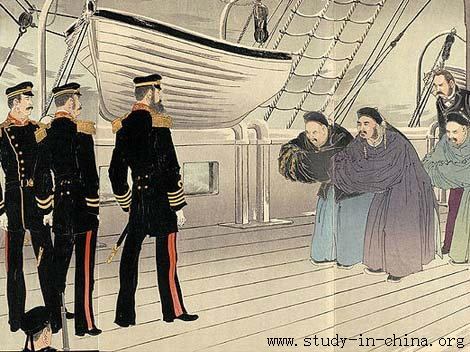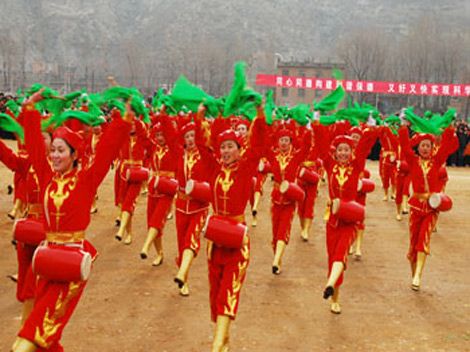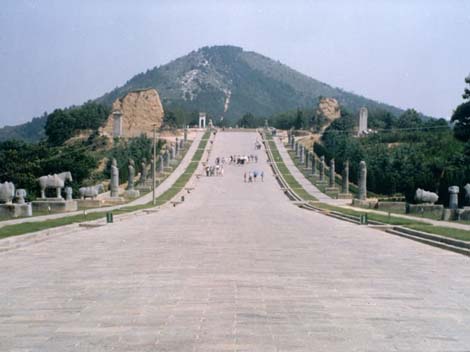| Home > China Feature |
First Sino-Japanese War - A Major Event in The Modern History of China or Even The World
The First Sino-Japanese War (1894-1895) was fought between Japan and China, and its subject was control of Korea. The Li-Ito Convention, an agreement forged in 1885, allowed both China and Japan to put their own troops in Korea. Nine years later, some Koreans revolted against the incumbent government and so both China and Japan sent troops to help quell the rebellion. However, after the job was done, Japan refused to withdraw its troops from the then Chinese-controlled Korea, and the war began as a result. The First Sino-Japanese War was fought in both naval and land battles. On land, several Japanese victories forced the Chinese army to retreat northward away from Pyongyang and Seoul. Another Japanese victory in Liaoning allowed the Japanese Army to invade the surrounding areas of China. At sea, the Chinese Navy lost several important naval battles to the Japanese. China's losses in the First Sino-Japanese War were surprising because China had more resources, a much larger population, a larger army, better battleships, and had spent much effort on modernizing its military. Despite all this, the military fell apart, soldiers pillaged their fellow citizens' villages, and soldiers repeatedly abandoned the battlefields. The organizational side of things was also in disarray, as officials were often corrupt and more interested in fighting each other than in trying to win the war. In 1895, the countries finally tried diplomacy, and both Japan and China signed the Treaty of Simonoseki to end the First Sino-Japanese War. This treaty made Korea a nominally independent country (it was actually a Japanese protectorate), gave control of Taiwan, the Liaodong peninsula, and the Pescadores islands to Japan, opened some Chinese ports to trade with Japan and Westerners, and stipulated that China must pay Japan 200 million taels. Very soon after the treaty was signed, however, international intervention forced the Japanese government to give the Liaodong peninsula back to China, but China had to pay an extra 30 million taels. A second treaty a year later allowed Japanese and Westerners to run factories in select Chinese trading ports
Art
 more
moreYicheng Hua Gu
The Flower Drum 花鼓 of southern Shanxi Province is a kind of folk d...

Sculpture in Qianling Mausoleum
The sculpture of Qianling Mausoleum is the main relic of the ground ...

A Sweet Art:Sugar Painting
In and around China’s southwestern Sichuan Province, it is usual to ...

Custom
 more
moreWeb Dictionary
Martial Arts
Wuxia, a Popular Culture for Most Chinese-Speaki...
Wuxia (武侠) is a broad genre of Chinese fiction that concerns its...
“Chinese Kung Fu Hot”
“Part the Wild Horse’s Maneton Both Sides”, “White Crane Spreads Its...
“Chinese Kung Fu Hot” in Alfred University
“Part the Wild Horse’s Maneton Both Sides”, “White Crane Spreads Its...





 print
print  email
email  Favorite
Favorite  Transtlate
Transtlate 







